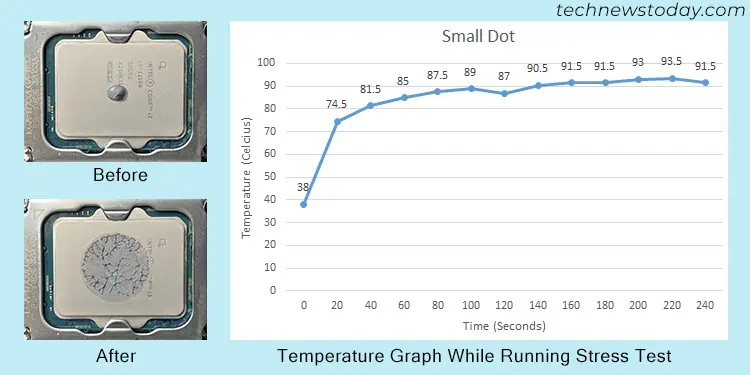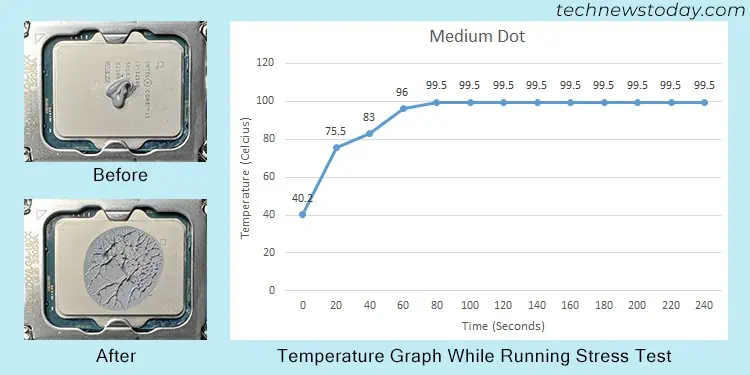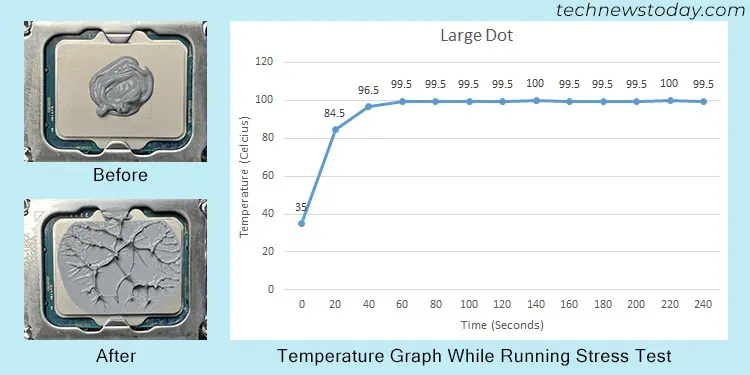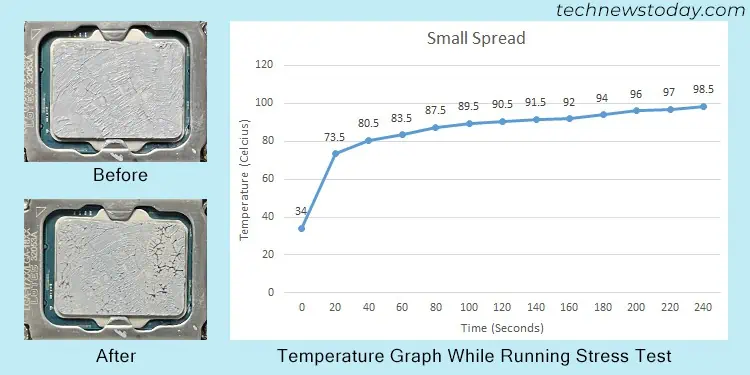Applying different amounts of thermal paste onto the CPU will give slightly different results. So, it is important to use a suitable amount to get the lowest CPU temperature possible.
The ideal amount of thermal paste on a CPU is sufficient tospread over evenly, forming a very thin layer that covers the surface without spilling over to the sides. This amount can vary depending on the type of thermal paste and the size of the CPU’s Integrated Heat Spreader (IHS).
In this article, I’ll go through all the considerations that go into determining the best thermal paste amount. Then, I will show you a few tests I did to help you get a better idea before giving any conclusion.
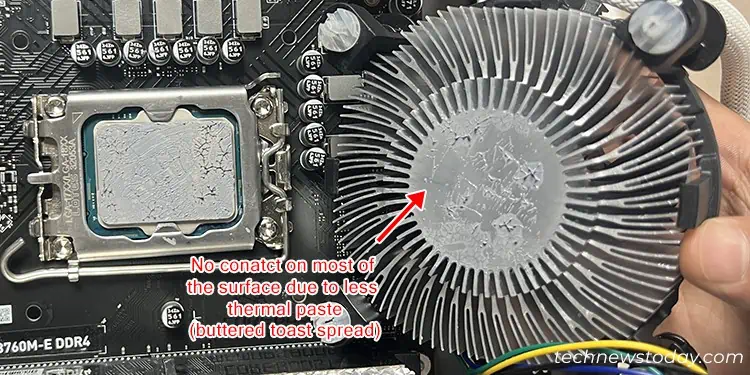
General Considerations for Thermal Paste Amount
To decide on the most suitable thermal paste amount for your CPU, first, you need to understand how the amount matters and what other factors affect it.
The amount directly impacts the heat dissipation or thermal conductivity of the interface. Both the quality of the paste and the size of your CPU IHS/die affect how much paste you’ll need. Let’s discuss all of these in detail.
If the CPU IHS surface perfectly matched with the heatsink, there would be no need for the thermal paste. However, even for new devices, their surface is not even at a microscopic level.
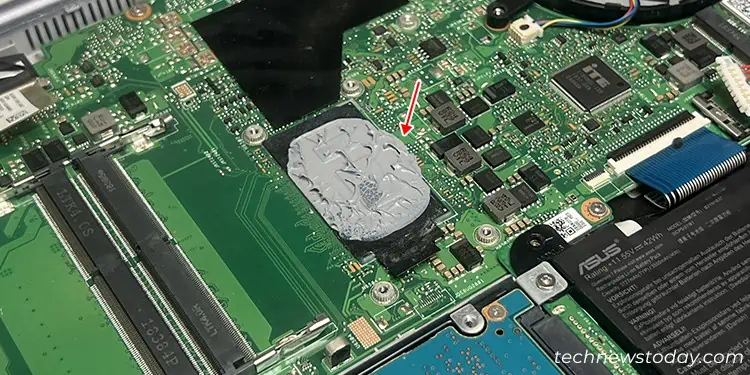
So, if you place a heatsink onto a CPU without any thermal interface material, many pockets of air will remain between them. The air increases the overall thermal resistivity of the cooling system, and yourCPU will start overheating, thereby affectingits lifespanand performance.
The thermal paste is supposed to fill all these gaps and provide the much-needed thermal conduction between the CPU and the heatsink. So, the amount of the paste needs to beenough to completely cover the surface of the CPUto maintain proper heat dissipation.
On the other hand, the thermal paste itself is nowhere near as thermally conductive as the metal in the IHS and the heatsink. It is just better than air in this regard.
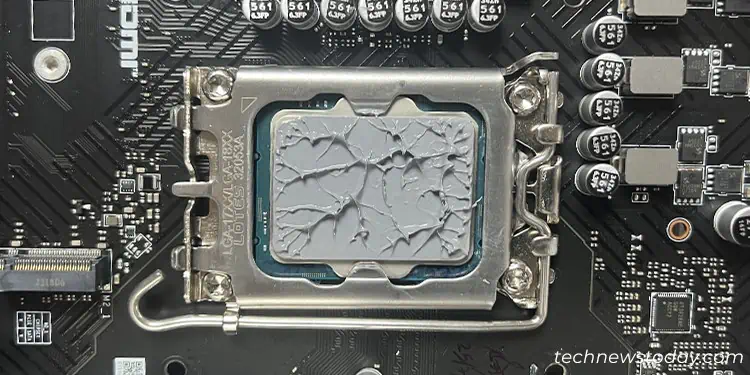
So,too much thermal pasteis also not an ideal option as it will justdeteriorate the cooling process. A thick layer may also introduce some air bubbles because of more surface irregularities in the paste.
What’s more, if you apply an excess amount of paste, it willsqueeze out to the motherboard or CPU socketdue to pressure from the CPU cooler. If you use any electrically conductive pastes like metal orliquid metal-based ones, they can cause short circuits and fry your motherboard.
Type and Quality of Paste
Different types of thermal pastes have different ranges of thermal conductivity. Metal-based ones provide higher thermal conduction but come with the drawback of being electrically conductive.
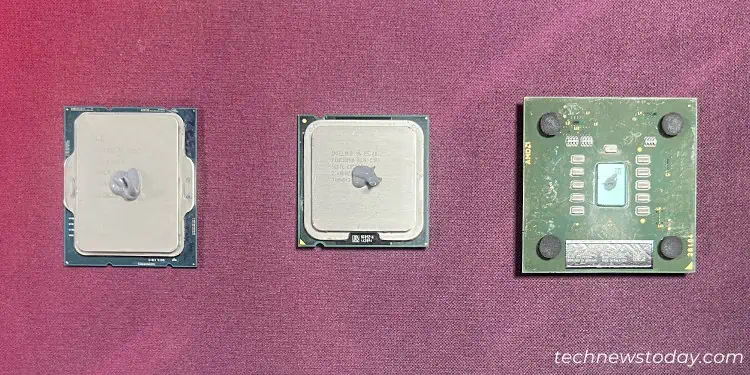
Ceramic, Silicon, or Carbon-based pastes don’t have such drawbacks, but they offer much lower thermal conduction. So, having a thicker layer or metal-based thermal paste is not as bad as having a similar layer of other such pastes.
